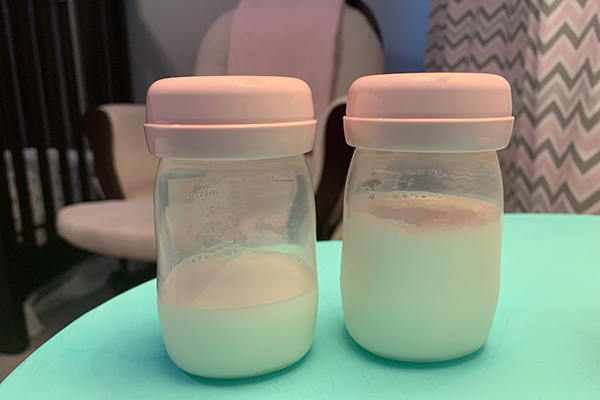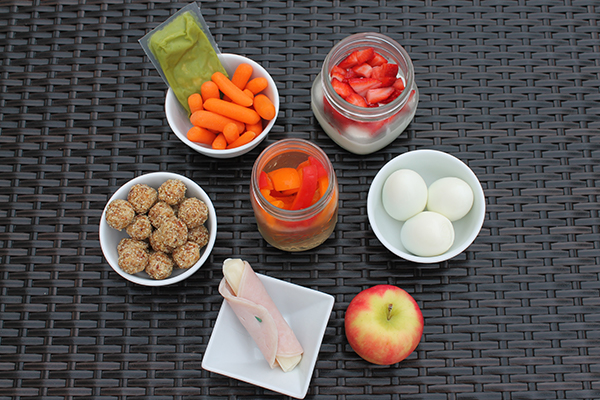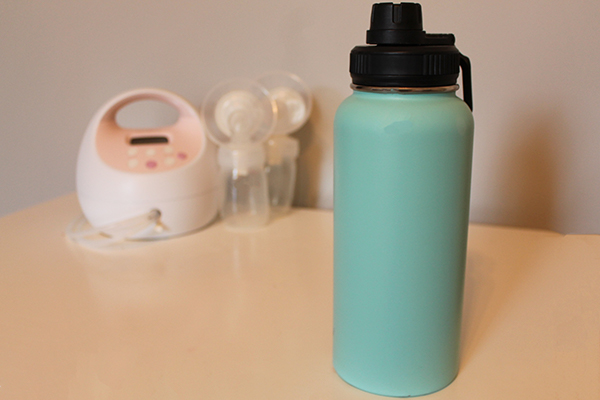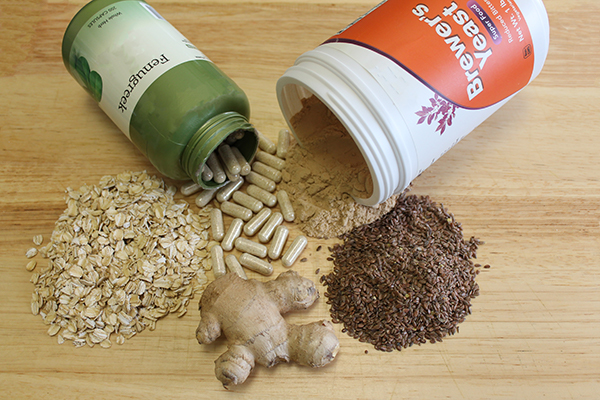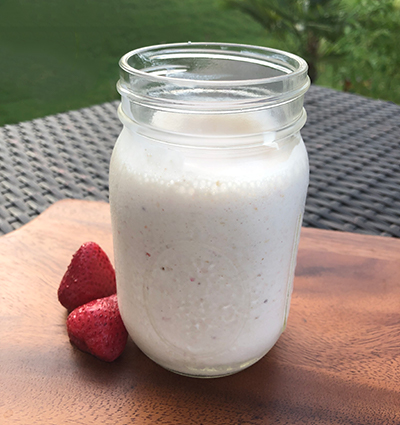One of the most common reasons for discontinuing breastfeeding is low milk supply – real or perceived. Dwindling breast milk supply can be caused by a variety of factors including ineffective latch, not nursing often enough, hormones, certain medications, stress and nutrition. The good news is many supply issues can be overcome with a little help.
The Fundamentals
Before throwing in the towel on breastfeeding, speak with your pediatrician and/or a lactation consultant. They can help you decide if your baby is getting enough and if your milk supply is truly dwindling. A lactation consultant will help ensure your baby is latching and nursing effectively and is in the proper position during feedings. If you’re pumping, they can provide guidance on proper size of flanges as well as suction and speed of the pump.
Once you’ve ensured the mechanics are in proper order, nurse and/or pump often. The amount of milk your body makes is based on supply and demand – i.e., the more milk that is removed (via nursing or pumping), the more milk your body will produce. In addition to nursing more often, fully drain both breasts at every feeding to signal your body to produce more milk (hint: this isn’t always as simple as feeling for breast fullness).
Eat to feed. Check out tips to keep your milk flowing #breastfeeding #WBW #saslife Click To TweetKeep Your Milk Flowing
After addressing the above front-line strategies, if you feel like your milk supply still needs a boost, other natural approaches may be enlisted.
Eat Enough
Making milk is hard work and your body needs an additional 300-500 calories per day to pump out that liquid gold. Therefore, eating regularly and getting enough calories from a variety of nutrient dense foods is key to maintaining milk supply. Grab a healthy snack when nursing or pumping in between meals to help with the increased calorie needs.
Hydrate Often
Water is a key component of breast milk. While breastfeeding, water needs are increased, so aim for 10+ cups of water daily to quench thirst and help support milk supply. If you drink 1 large cup of water every time you nurse or pump, you’ll be well on your way to achieving this goal. Keep a water bottle (or 3) within arm’s reach so you can sip on it throughout the day. (I kept several bottles strategically placed around the house and office.)
Sleep!
Prolactin and oxytocin, key hormones involved in milk production, increase when you sleep and lack of sleep can have a negative impact on breast milk supply. Even a quick power nap can boost levels. So it turns out the age-old advice to “sleep when baby sleeps” really is important. While I realize this is not always realistic, make it a priority to get adequate rest. Plus, a little extra shut eye is a pretty luxurious way to maintain milk supply!
Manage Stress
Stress, whether it be physical, mental or emotional, causes a rise in cortisol levels which can have a negative impact on oxytocin and other hormones that regulate milk production. Stress can also hamper the let down reflex. Take a few moments every day to unwind and destress. Take a bath, read a few pages in a favorite book, do some deep breathing or meditation while nursing or pumping, practice yoga or stretching, etc. – whatever brings you peace, calm and happiness.
Incorporate Milk-Making Foods
Lactogenic foods, also known as galactagogues, are foods, spices and herbs that support lactation. It comes from the Latin word ‘lac’ meaning “milk” and ‘genic’ meaning “producing.”
While more research is still needed to prove the efficacy of lactogenic foods, they are often used by breastfeeding women with success. However, what works for one person may not work for the next, but it’s worth a try! And remember that without adequate and frequent removal of milk (via nursing or pumping), no combination of lactogenic foods will work.
Stick with fresh versions of lactogenic foods as much as possible. If you opt for a supplement, check with your provider or lactation consultant first to determine safety and appropriate dosage.
If something seems to be working, once you have achieved the desired milk supply, slowly cut back on the lactogenic food(s) so you won’t overdo it. Oversupply is another issue that could lead to an entirely different set of problems you don’t want!
Brewer’s Yeast
- What it does: contains chromium, B vitamins, protein and phytoestrogens which may help boost milk production in addition to improving energy and feeling more emotionally balanced.
- How to use it: add small amounts (it’s super bitter!) to muffin, pancake, or waffle batter, oatmeal, energy bites or smoothies.
Fenugreek
- What it does: increases oxytocin production which aids in increased milk supply and has also been shown to speed up newborns’ return to birth weight.
- How to use it: enjoy as a tea (homemade using the seeds or store-bought; it’s also a key ingredient in the popular Mother’s Milk Tea) or take in supplement form. (Heads Up: you may smell like maple syrup but that means it should be working; be sure to check with your provider first before starting any supplements.)
Flax Seed
- What it does: contains essential fatty acids which are a key component of breast milk and are essential for hormone production which regulate milk supply.
- How to use it: sprinkle onto salads, smoothie bowls or yogurt; add to smoothies or energy bites; or mix with water to create an egg replacement to then use in muffins. (Pro Tip: consume ground to get the most benefits.)
Ginger
- What it does: has been used medicinally for thousands of years so in addition to being great for overall health it also helps with the let-down reflex and improves milk volume production.
- How to use it: grate over fruit; stir into yogurt; add to smoothies, salad dressings, sauces or marinades; enjoy as a tea (homemade or store-bought); or for a refreshing twist, add to water. (Pro Tip: store fresh ginger root in the freezer to keep it good for months.)
Oats
- What it does: contains beta-glucans, plant estrogens and saponins which positively impact prolactin production and other hormones related to breast milk production; also a great source of iron, B vitamins and soluble fiber.
- How to use it: add to energy bites, protein bars, muffins, pancakes or smoothies; enjoy a warm bowl of oatmeal with nut butter (Time Saving Tip: make it ahead!); or on hot days, try a cool jar of overnight oats.
Do What Works
At the end of the day, fed is best and both baby and mom need to be healthy. There is no one right way to achieve this. Hopefully you’ll be able to continue on the feeding journey you planned for, but if it ends up looking different or changing before you anticipated, that’s okay. Whatever feeding decisions you make is the right one for you and your family – remember this!
Strawberry Banana Lactation Smoothie
Makes 1 Serving
Recipe Adapted from Exclusive Pumping
PRINT RECIPE
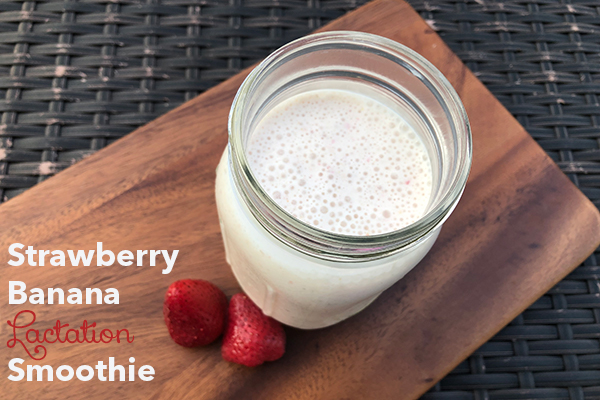
This smoothie contains 3 lactation boosting ingredients - Brewer's yeast, flax seeds and oats - to help keep your milk flowing. Plus, it's a meal or snack you can enjoy with one hand, leaving the other hand free to care for baby 🙂
Ingredients
¼ cup rolled oats, dry (not cooked)
½ banana
4 frozen strawberries
½ cup milk
¾ cup plain Greek yogurt
1 tsp Brewer’s yeast
1 tsp flax seed
1-2 tsp honey (optional)
Directions
- Put oats into blender and process until well ground.
- Add remaining ingredients and blend until smooth.
- Add more liquid, if needed, until desired consistency is achieved.
